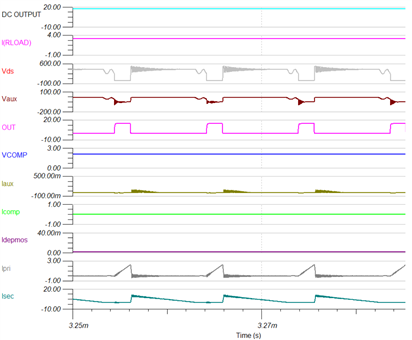Other Parts Discussed in Thread: LM5023
Hello,
I had bought a LM5023 Evaluation Board (LM5023-2NBEVM) and tried to simulate it as it is in Tina software. It is perfectly working for transformers designed for 55kHz frequency and quasi resonant waveform was also observed.
In the data sheet of LM5023, it is mentioned that the IC is capable to handle the frequency up-to 130kHz. Hence I tried with the transformer which is designed for 100kHz frequency, but while simulation instead of quasi resonant, valley switching is obtained and after that convergence error occurs.
I had modified the values in the voltage divider of QR pin by considering the calculations given in data sheet of LM5023 (eq. 45 (R1), eq. 51 (R2), eq. 54 (Cd)).
What other parameters I need to modify to get the quasi resonant waveform at 100kHz?
I am attaching my simulation waveform just before convergence occurs for 100kHz frequency transformer.

Regards,
Raj

